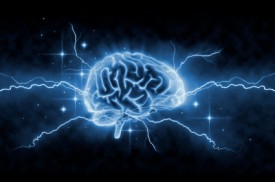 Recently Scientific Learning hosted The Neuroplasticity Revolution, a webinar with Dr. Norman Doidge—psychiatrist, psychotherapist, researcher, and author of the New York Times bestseller The Brain That Changes Itself. The concept of brain plasticity—the brain’s ability to grow and change in structure and function in response to experience—is “the most important change in our understanding of the brain in 400 years,” Doidge told an audience of more than 3,800 registrants.
Recently Scientific Learning hosted The Neuroplasticity Revolution, a webinar with Dr. Norman Doidge—psychiatrist, psychotherapist, researcher, and author of the New York Times bestseller The Brain That Changes Itself. The concept of brain plasticity—the brain’s ability to grow and change in structure and function in response to experience—is “the most important change in our understanding of the brain in 400 years,” Doidge told an audience of more than 3,800 registrants.
Doidge reviewed concepts of brain and mind in history—dominated until very recently by the idea that the adult brain is hard-wired and therefore fixed in ability—and explained why it took scientists such a long time to observe and accept the brain’s plasticity. He then told the story of a woman named Cheryl, who was fortunate to find herself in need of brain rehabilitation afterthat old notion had been put to rest.
Cheryl had a balance problem. Her sense of balance had been so damaged by the antibiotic gentamicin that she couldn’t stand up without feeling that she was falling. Physician-neuroscientist Paul Bach-y-Rita treated Cheryl with “sensory substitution,” a therapy he developed that provided corrective sensory feedback from a motion sensor through electrodes to Cheryl’s tongue. The technique immediately helped Cheryl gain her bearings and she found that she could maintain her balance for a period of time after removing the training gear. This residual effect gradually lengthened, and over the course of a year, Cheryl regained the ability to stand normally without using the device at all.
Cheryl was able to regain normal function, said Doidge, despite having 97.5% damage to her vestibular apparatus—the semicircular canals in the ear that connect to the brainstem and help to orient us in space. He noted that often, but not always, there’s some kind of neural workaround even in severe cases. Cheryl’s recovery not only seems miraculous, but also points to the fact that her brain changed itself to heal—by recruiting dormant pathways or making new pathways for the corrected sensory information to travel.
Cheryl’s, story, said Doidge, is just one example of how the brain learns. He went on to discuss “conventional learning” and learning disorders in the classroom, walking his audience through Dr. Michael Merzenich’s research demonstrating the neural underpinnings of brain plasticity and learning.
Dr. Merzenich conducted a series of experiments in which he rearranged the wiring of the nerves connecting a monkey’s fingers to its brain. He expected to see the brain maps for these fingers become distorted or jumbled, but instead found that they turned out fairly normal. He realized that the brain was able to adapt to the structural changes by taking timing into account. The thumb usually initiates movement, for example, followed closely in time by the index finger. The middle and ring finger behave in a similar way. And Merzenich realized that the monkey’s brain used the timing intervals to determine which fingers were adjacent to one another and map them accordingly. These experiments finally converted the brain plasticity skeptics.
A recording of the full webinar is now available on the Scientific Learning website.
Watch to learn the answers to the following questions:
- What are the 6 epochs of plasticity across the lifespan?
- Why does true immersion work so well for language learning?
- Why do 5-10% of preschool age children have trouble learning to read, write, and follow instructions?
- How does the Fast ForWord program help normalize the brains of dyslexic learners?
- And perhaps most intriguing of all, what does Freud have to do with any of this?
Related reading:
Overcoming Language and Reading Problems: The Promise of Brain Plasticity
Auditory Processing Skills & Reading Disorders in Children

